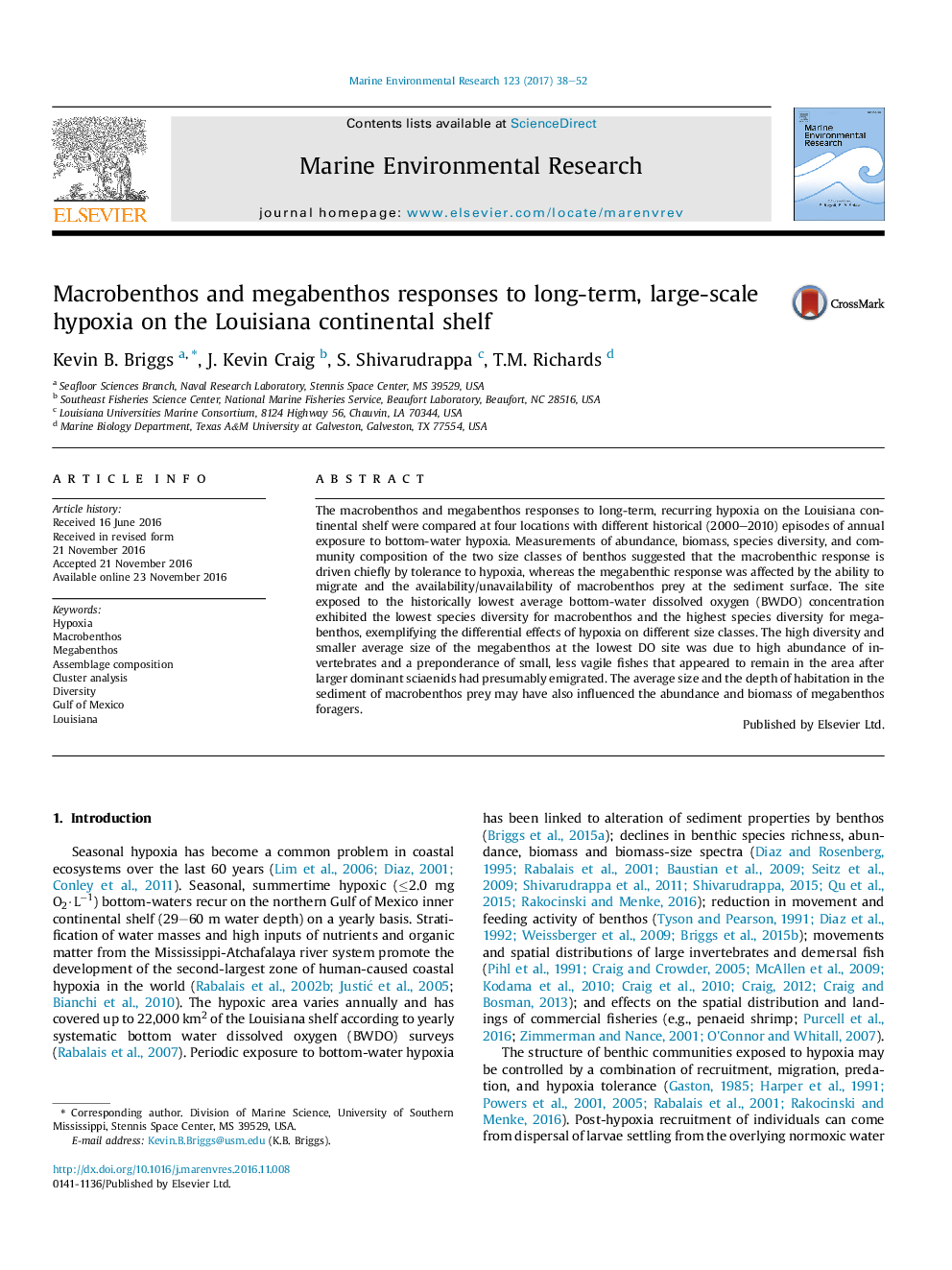| Article ID | Journal | Published Year | Pages | File Type |
|---|---|---|---|---|
| 5766181 | Marine Environmental Research | 2017 | 15 Pages |
Abstract
The macrobenthos and megabenthos responses to long-term, recurring hypoxia on the Louisiana continental shelf were compared at four locations with different historical (2000-2010) episodes of annual exposure to bottom-water hypoxia. Measurements of abundance, biomass, species diversity, and community composition of the two size classes of benthos suggested that the macrobenthic response is driven chiefly by tolerance to hypoxia, whereas the megabenthic response was affected by the ability to migrate and the availability/unavailability of macrobenthos prey at the sediment surface. The site exposed to the historically lowest average bottom-water dissolved oxygen (BWDO) concentration exhibited the lowest species diversity for macrobenthos and the highest species diversity for megabenthos, exemplifying the differential effects of hypoxia on different size classes. The high diversity and smaller average size of the megabenthos at the lowest DO site was due to high abundance of invertebrates and a preponderance of small, less vagile fishes that appeared to remain in the area after larger dominant sciaenids had presumably emigrated. The average size and the depth of habitation in the sediment of macrobenthos prey may have also influenced the abundance and biomass of megabenthos foragers.
Keywords
Related Topics
Physical Sciences and Engineering
Earth and Planetary Sciences
Oceanography
Authors
Kevin B. Briggs, J. Kevin Craig, S. Shivarudrappa, T.M. Richards,
